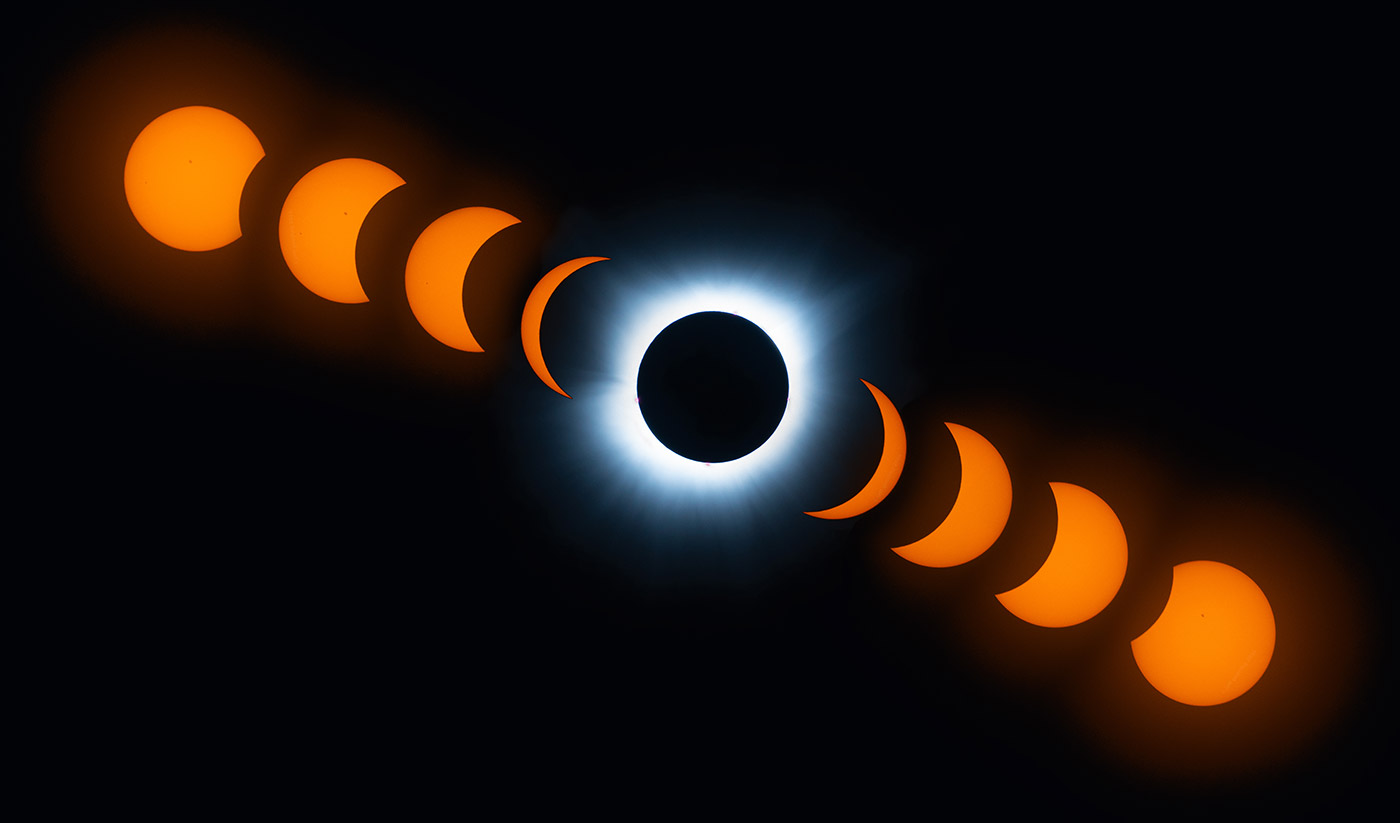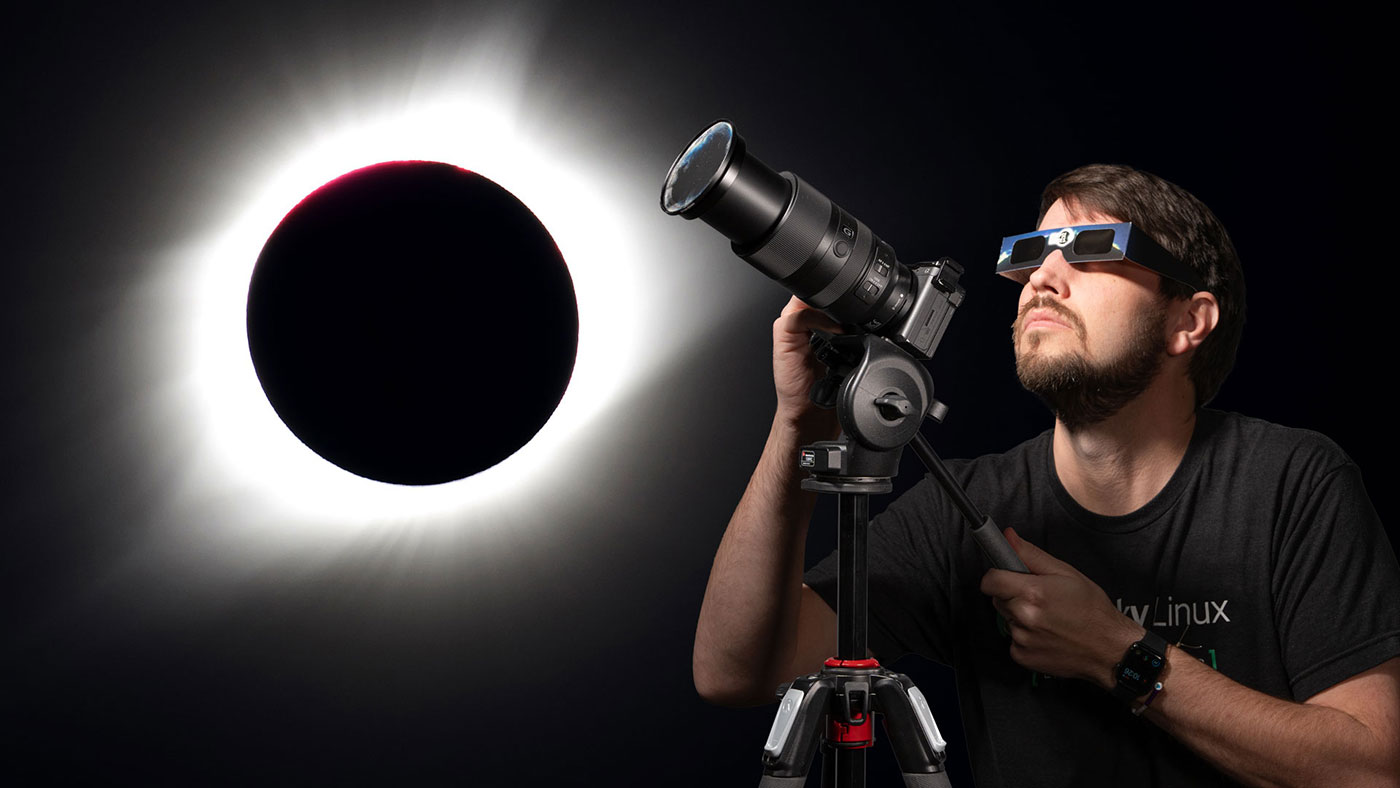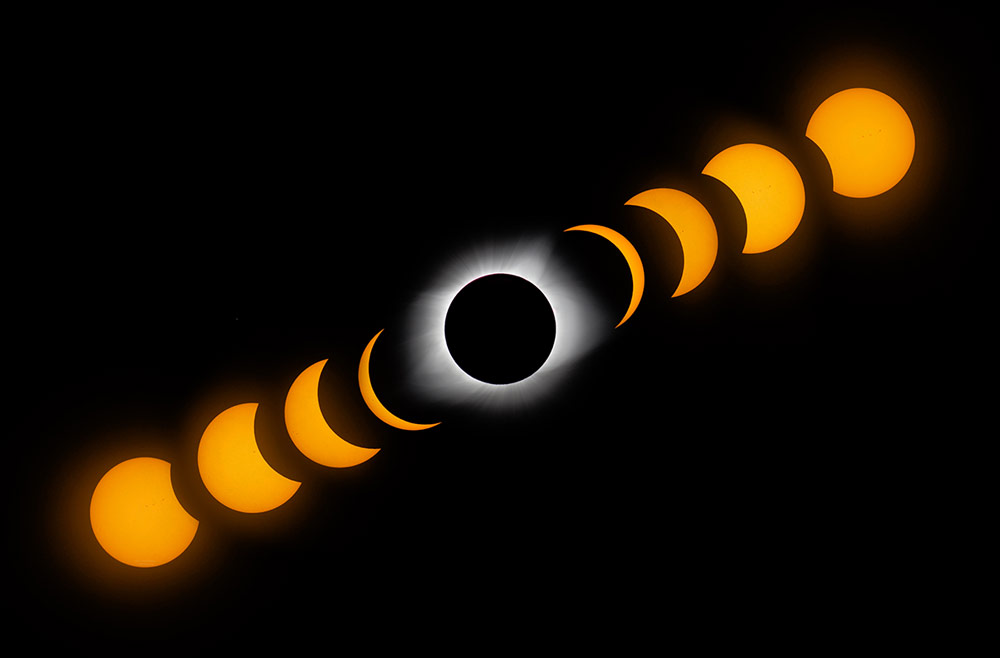Photographing the 2024 Total Solar Eclipse (results)
The path of totality for the 2017 Total Solar Eclipse ran right through my backyard, and it was my first experience photographing totality. Total solar eclipses, when the moon completely covers the sun, are rare. After this year's eclipse, the lower 48 United States will see a brief bit of totality up around Montana in 2044, and a major event across the US in 2045—and I'll be near retirement!

See the full-size image of the eclipse composite on Flickr.
The above photograph is a composite image of all the stages of the 2024 eclipse. I took the pictures in the midst of a few thousand people scattered Fruitland, Missouri, during the April 8, 2024 Total Solar Eclipse.


